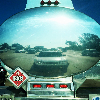I'm trying to find out the max acceptable heat/temp I can expose pushrods and/or rockers to, without damaging them.
It is known that the 4.0L-OHV has poor top end / valve train oiling; often leading to premature wear of pushrod ends and pushrod cups in the rockers. So, I thought I would try using a dry-film lubricant engine coating.
http://www.techlinecoatings.com/hi-performance/bs-internal-engine-coatings.html
I'm looking at the DFL-1 PowerKote:
My concern is the 300deg, for 1 hour. Does anybody see any problems with this; such as loss of "temper", unintended hardening/embrittlement, and/or warpage of the parts? As I said, I intend to use it on the pushrods, the inside "bore" and both the pushrod cup as well as the valve end tip of the rockers. I would also probably use it on the rocker shafts, as well as possibly on the inside bore of the rocker shaft springs/spacers. Basically, anything that will slide/rotate, or otherwise make metal-to-metal contact.
The cost of this product is $37.95, for 1oz. It is intended to be sprayed with an airbrush, in a very thin film. So, that 1oz should be more then enough according to the manufacturer I already have a "spare" toaster oven, so with a cheap harbor freight airbrush, I can do this for $100-$150. It supposedly can substantially reduce friction, and therefore heat.
I may also coat the stock exhaust manifolds with the appropriate thermal barrier coatings to retain exhaust heat in the pipe, and reduce under hood temps. Unfortunately, I don't think a manifold would fit in my toaster over. Maybe I can build an "extension" box, so I can still use the toaster ovens heating elements and thermostat?
It is known that the 4.0L-OHV has poor top end / valve train oiling; often leading to premature wear of pushrod ends and pushrod cups in the rockers. So, I thought I would try using a dry-film lubricant engine coating.
http://www.techlinecoatings.com/hi-performance/bs-internal-engine-coatings.html
I'm looking at the DFL-1 PowerKote:
DFL-1 POWERKOTE (Dry Film Lubricant)
High pressure lubricant.
Reduces friction, galling and scuffing. Increases part life.
Requires no clearance changes to compensate for the coating.
Apply to any part subject to sliding or rotating friction.
Excellent for use on bearings.
Water based no hazardous fumes.
Requires baking. Cures at 300�F minimum. Must be oven cured.
My concern is the 300deg, for 1 hour. Does anybody see any problems with this; such as loss of "temper", unintended hardening/embrittlement, and/or warpage of the parts? As I said, I intend to use it on the pushrods, the inside "bore" and both the pushrod cup as well as the valve end tip of the rockers. I would also probably use it on the rocker shafts, as well as possibly on the inside bore of the rocker shaft springs/spacers. Basically, anything that will slide/rotate, or otherwise make metal-to-metal contact.
The cost of this product is $37.95, for 1oz. It is intended to be sprayed with an airbrush, in a very thin film. So, that 1oz should be more then enough according to the manufacturer I already have a "spare" toaster oven, so with a cheap harbor freight airbrush, I can do this for $100-$150. It supposedly can substantially reduce friction, and therefore heat.
I may also coat the stock exhaust manifolds with the appropriate thermal barrier coatings to retain exhaust heat in the pipe, and reduce under hood temps. Unfortunately, I don't think a manifold would fit in my toaster over. Maybe I can build an "extension" box, so I can still use the toaster ovens heating elements and thermostat?










